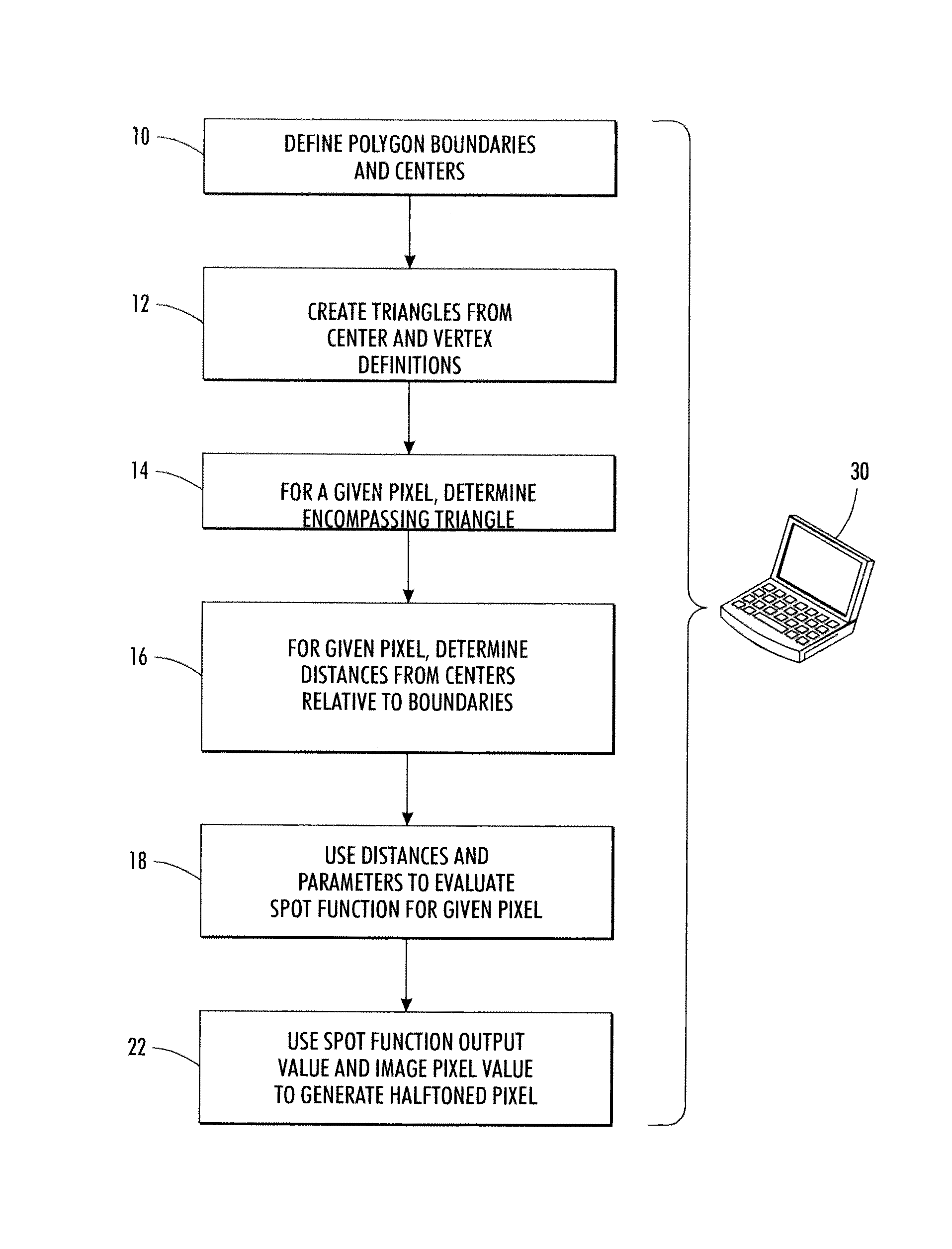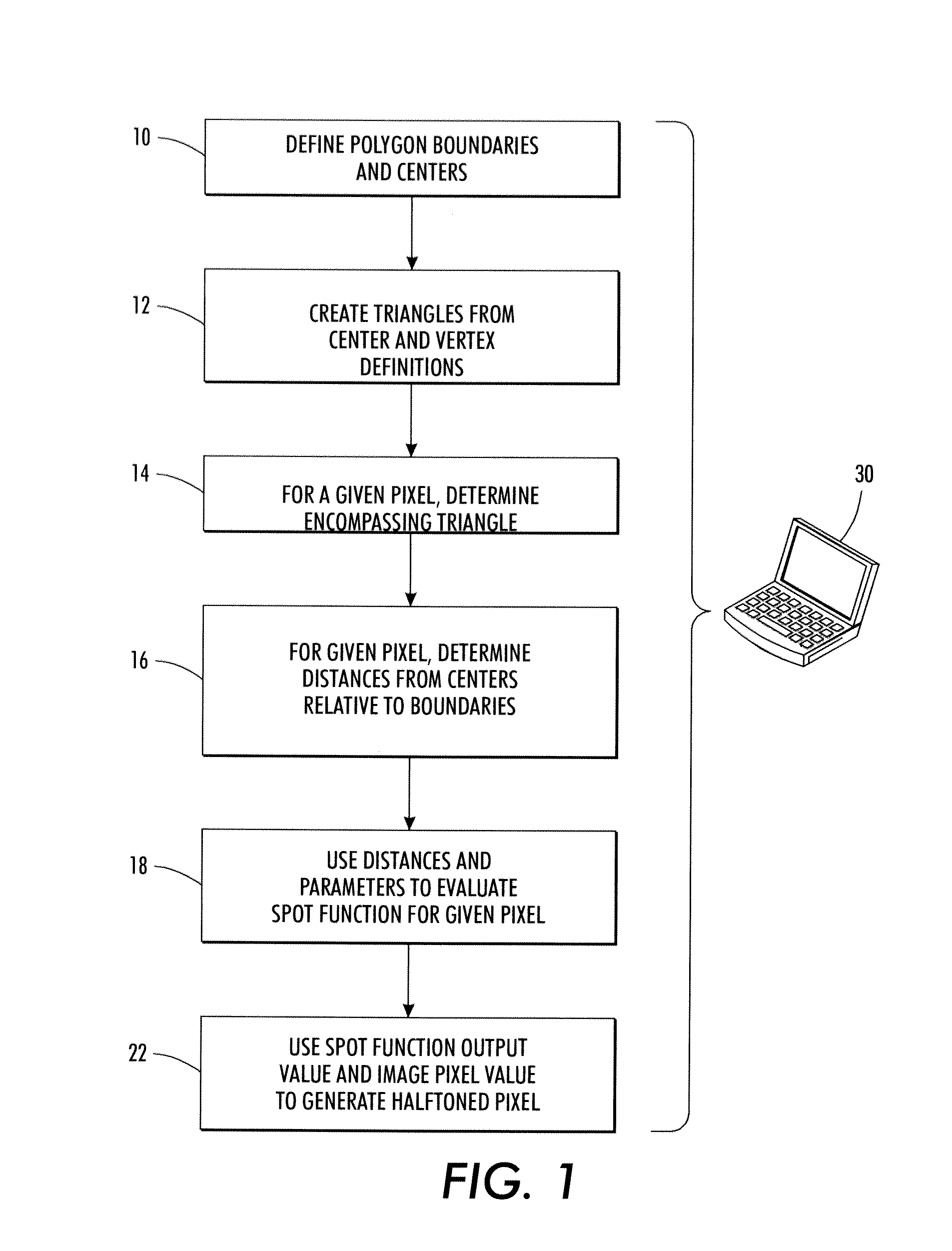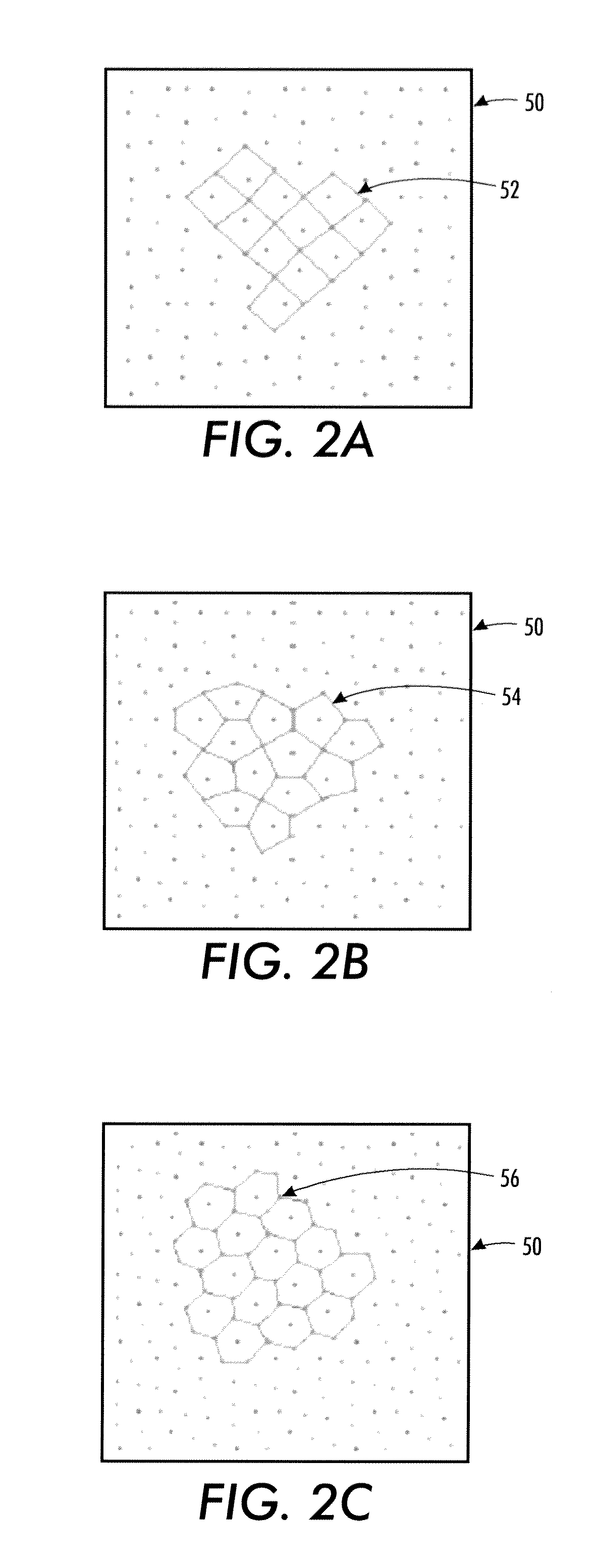Polygonal-boundary-based halftone method
- Summary
- Abstract
- Description
- Claims
- Application Information
AI Technical Summary
Benefits of technology
Problems solved by technology
Method used
Image
Examples
Embodiment Construction
[0029]The above-described problem is solved by providing a halftoning method that uses boundaries and centers of a polygonal tiling with a parameterized spot function that operates within the tiles. In general, the steps involved in defining the halftone structure include defining the polygonal tiling with a specification of the polygon boundaries and center, and setting and applying parameters of the spot function, which utilizes center-to-boundary distances. The tiling can be defined in one of several ways, such as explicitly defining a tile structure, or providing centers, one per polygon, and vertices for the polygons. The vertices and centers can be used to generate the polygon boundaries. The polygonal tiling can be regular (e.g., repetitive) or irregular, and can also be varied in a manner adapted to the image content or to data that is being embedded. Various definitions of polygon center may be used. The spot function is based on triangulation of the polygons and center-to-...
PUM
 Login to View More
Login to View More Abstract
Description
Claims
Application Information
 Login to View More
Login to View More - R&D
- Intellectual Property
- Life Sciences
- Materials
- Tech Scout
- Unparalleled Data Quality
- Higher Quality Content
- 60% Fewer Hallucinations
Browse by: Latest US Patents, China's latest patents, Technical Efficacy Thesaurus, Application Domain, Technology Topic, Popular Technical Reports.
© 2025 PatSnap. All rights reserved.Legal|Privacy policy|Modern Slavery Act Transparency Statement|Sitemap|About US| Contact US: help@patsnap.com



